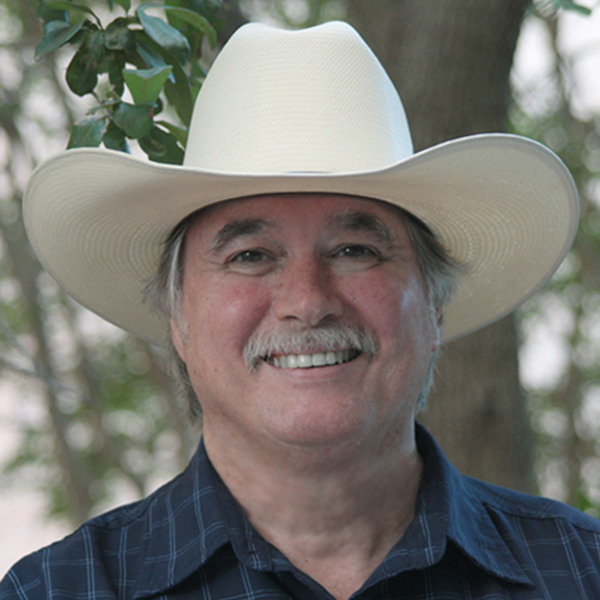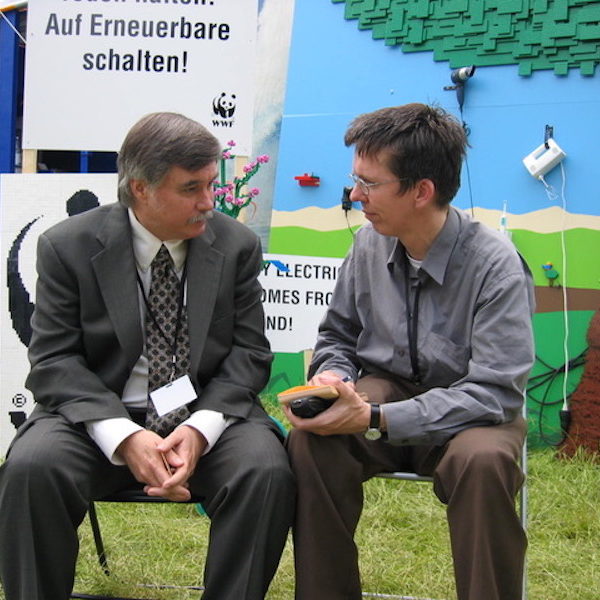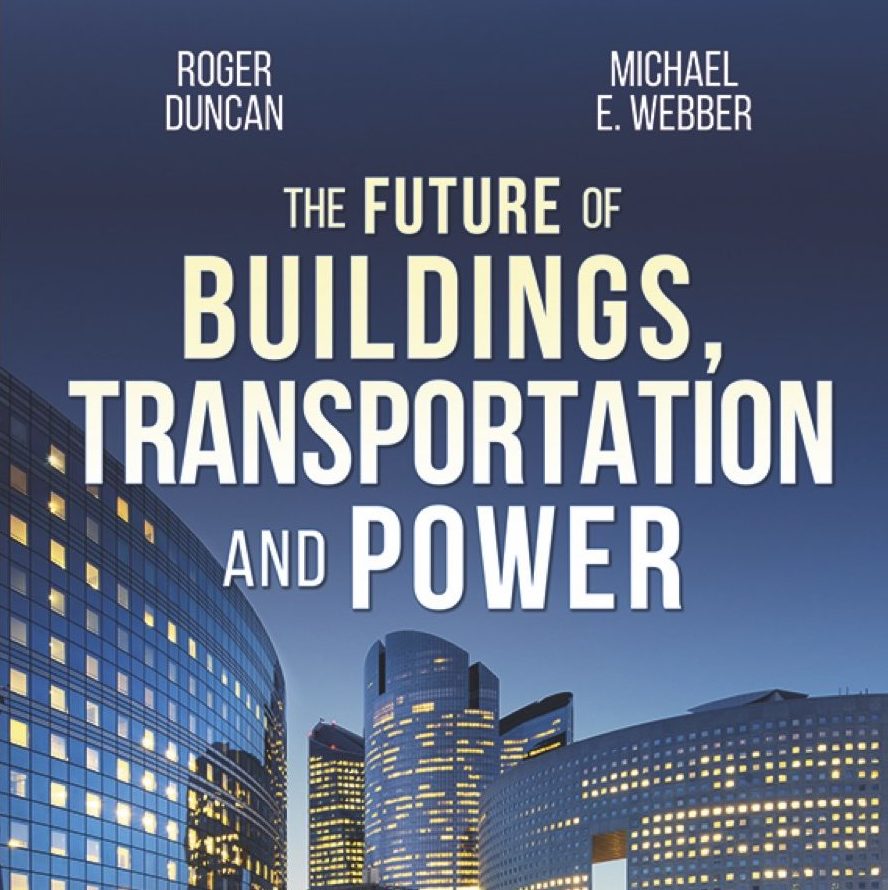
Share
Are smart cities and flying cars in Texas’ near future?
Former Research Fellow at the Energy Institute at The University of Texas at Austin and former General Manager of Austin Energy, Roger Duncan knows his way around the energy sector. He’s also served as executive manager of the Environmental and Conservation Services and the Planning and Transportation departments for the City of Austin, and served two terms on the Austin City Council, qualifying him as an expert in city planning and transportation.

We chatted about Duncan’s new book The Future of Buildings, Transportation and Power, co-written with UT Josey Centennial Professor in Energy Resources, Michael E. Webber, and the future of clean and sustainable energy for Texas.
Where did you grow up and where do you live now?
I grew up in Port Neches, near Beaumont, Texas. I came to Austin in 1967 and currently live in central Austin, near Zilker Park.
How did you get involved with the City of Austin and the University of Texas at Austin?
I came to UT in 1967 to study philosophy. I got involved in local politics and was elected to the City Council in 1981 and again in 1983. I had a short but successful political career – leaving office undefeated and unindicted.
Then in 1989, the City Manager asked me to return as an executive manager with the new environmental department, and later I was asked to move over to Austin Energy, the municipal electric utility. I worked on many renewable energy and sustainable energy projects and retired as general manager of Austin Energy in 2010. After that retirement, I returned to UT and joined the Energy Institute. I retired from UT in 2019.
Do you see a clean and sustainable future for Texas’ energy supply?
Yes. Texas has an abundance of solar and wind resources and it should not be a problem, over time, to convert the Texas economy to be powered by renewable energy. Texas is already a national leader in wind power, and the solar resource is even greater.
How is energy evolving in Texas, and how will this affect our future?
Texas will be at the forefront of the movement towards solar and wind because of our abundance of those resources and a grid structure that can rapidly be expanded. The renewable energy zones established by the Texas grid operator, ERCOT, have provided a national model for solving the transmission problems associated with wind and solar resources being located away from the cities. Now the technology behind these sources provide the cheapest electricity of any resource, and they will continue to take over the market from coal and natural gas.
What big impacts do you see Artificial Intelligence (AI) having on agriculture?
AI will allow much more efficient monitoring of crops, soil moisture, planting and harvesting. AI-directed farm equipment will more precisely till and plant and harvest. AI analysis of space-based monitoring will give early indication of pests, soil problems, forest growth and so forth.

What predictions can you make regarding the future of the oil and gas industry in Texas?
The oil industry internationally is peaking and starting to decline. The pandemic may have moved peak oil consumption up by several years. Texas still has great oil reserves but oil prices will make it difficult for many companies to make a profit. Oversupply in gas is also a problem, and the fracking boom is ending, now that it is clear that fracking wells are depleting much faster than projected.Things do not look good for the oil and gas industry in Texas.
In the book, you say that in the future we will be living, working and moving about inside robots. What do you mean?
Our buildings and vehicles will be increasingly embedded with robotics and artificial intelligence until they seem autonomous. Cars will drive themselves, talk to us, and communicate extensively with the outside world. Buildings will have AI systems that will interact with us, handle deliveries, self-repair, deal with both on-site power and the electric grid, and future buildings will include embedded robotics and electronics. Although it may at first sound creepy, we will be living and moving about inside robots.
When are we going to get flying cars?
There are already some prototypes of vehicles that can drive on a road and then take off. NFT, AeroMobil and Terrafugia are working on such vehicles. But it is difficult to imagine how cars would get the space needed to take off and land on traffic-filled roads. A more likely scenario is with air taxis that are electric vertical take-off and landing (eVTOL) vehicles. These will be closer to a helicopter than a car, and would use open spaces like rooftop heliports or lawns. Uber hopes to have an air taxi service by 2023 and several other companies – Boeing, Airbus and Bell – are working on vehicles that should be available in a few years.
Cover photo courtesy Riccardo Annandale on Unsplash
Leona Barr is a freelance writer living in Austin.















